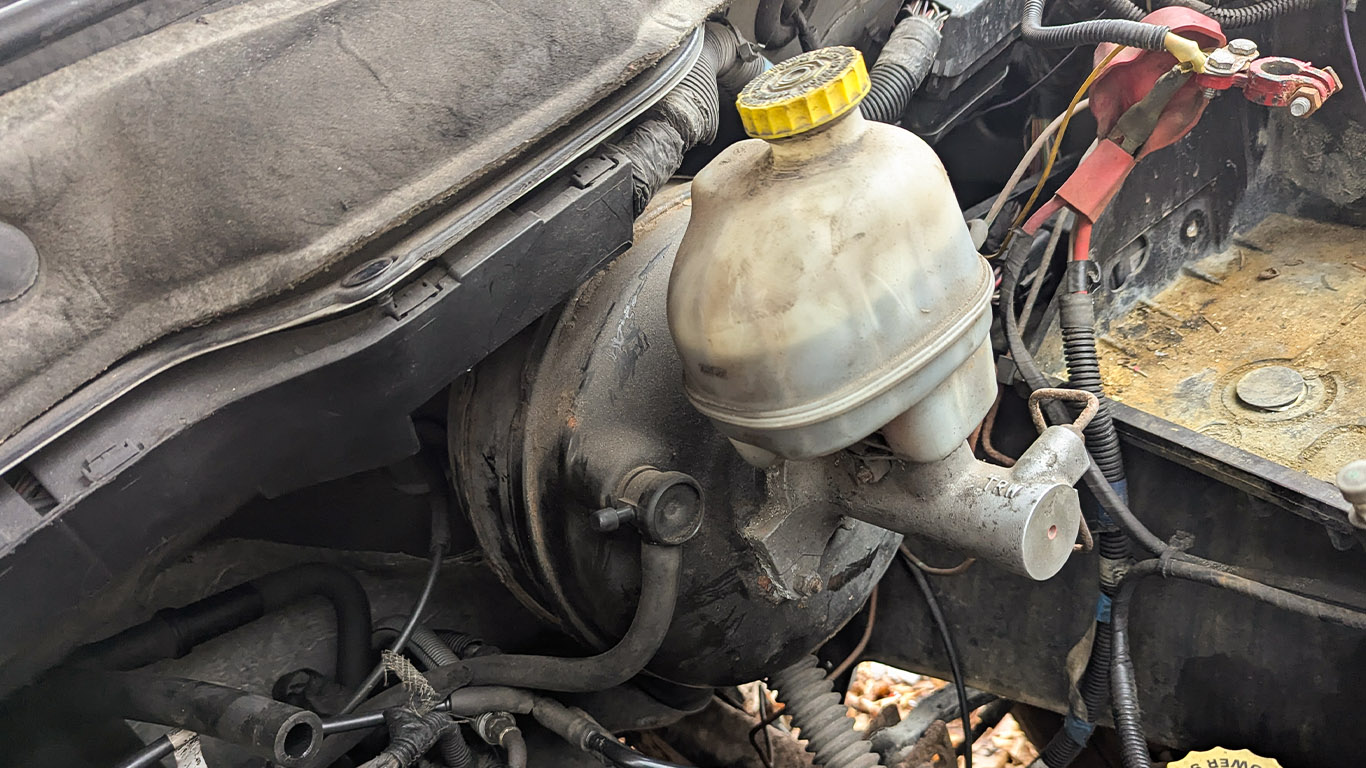

We may earn revenue from the products available on this page and participate in affiliate programs. Learn more ›
In the wide, wide world of automotive terminology, there are a number of parts with names that are pretty logical and help to understand how cars work. Slang words aside, like a spider hose, some stuff just makes sense. Namely the brake booster.
The brake booster (also referred to as a servo across the pond) is what separates power-assisted brakes from manual ones. This means that there is something other than human exertion aiding pedal pressure production—say that five times fast. This translates to increased clamping pressure on the car’s braking system, be it via vacuum or hydraulic pressure, or even electronic actuation. Where that takes place is inside the brake booster.
Here’s how a brake booster works, and why it’s so crucial to any modern car’s safe operation.

How Does a Vacuum Brake Booster Work?
The most common form of boosting a car’s braking capability works via a vacuum feed from the car’s engine. Here’s a simple overview of how that looks.
Firstly, the brake booster attaches to the master cylinder. The master cylinder bolts up against the engine-side firewall. Always within easy reach to the rest of the braking system, as well as the brake pedal inside the car.
The unit itself is a simple metal chamber separated by a diaphragm. It has a shaft in the middle that has a succession of valves and springs. When the brake pedal isn’t depressed, vacuum occupies both chambers. When it is depressed, atmospheric pressure (or, the pressure that is accumulated from outside the vacuum system) enters via a valve on the side facing the brake pedal.
A one-way check valve prevents this atmospheric pressure from entering the vacuum-only side of the chamber, facing the master cylinder.
In addition to pedal pressure supplied by the driver’s foot to push the shaft forward, the pressure differential between the two halves—increases braking pressure even more. This atmospheric-sided force is built up to push harder on the brake master cylinder, which in turn pushes the system’s hydraulic fluid out to each brake line (not before reaching the ABS pump), and then to each caliper and/or drum.
Well, it’s the 21st century and calipers take care of most of the clamping force.
Check out this video for a more detailed look at exactly what happens inside the brake booster.

What is a Hydraulic Brake Booster?
Hydraulic boosters are most common on diesel engine vehicles, as they do not produce vacuum. This takes pressurized hydraulic fluid from the hydraulic steering system and stores it in an accumulator, which then sends it to the master cylinder to aid braking.

But Then What is an Electric Brake Booster?
Cars that don’t have a vacuum or hydraulic feed, most commonly EVs, use electric brake boosters. However, they’re common in the aftermarket for custom applications that don’t have strong vacuum systems.
This comes in two forms: an all-electric system or a system that uses electronic actuators to build up hydraulic pressure and then provide a boost to clamping force.

Signs of a Failing Brake Booster
There are various signs that a brake booster is in the process of giving up the ghost. One would be an increase in noise as all vacuum brake boosters make a light pump-like noise. But if it gets louder than usual, this could indicate that it’s on its way out.
Fluid leaks around the booster/master cylinder assembly could also clue you in on a lacking braking system.
As could increased brake pedal travel. If you’re finding yourself pushing the pedal further than usual, and your brake pads, brake rotors (or discs), and fluid are all in good shape, including no leaks in any brake lines, it could mean that the brake booster either has a leak in the vacuum lines attached to it, or in the booster itself.
Another sign is an increase in pedal firmness—if the pedal feels rock-hard and requires extra effort to slow down or stop from a reasonable speed, this could mean your braking system needs repair, and you’re essentially back to fully manual brakes.
A brake pedal that returns to its un-pushed position slower or not at all is another sign that one or more of the booster’s components has failed.
Interestingly, a vacuum leak in the booster can translate to a poorly running engine since its system of vacuum lines is all interconnected. Quite frighteningly, if an electric brake booster fails, it could result in a total loss of braking force. Thankfully, many modern cars will clue you in with a check engine or ABS light, prompting you or a technician to investigate the cause further.

Brake Boosters Are Fascinating
These handy little helpers have been bolted up in cars for many decades now, and it’s quite cool that such an essential technology as utilizing vacuum to increase pressure, is still in widespread use.
More from The Drive
- Here are the best sunglasses for driving
- Check out the best Power Wheels for rough terrain
- What is the zipper maneuver?
- Power coating is neat technology